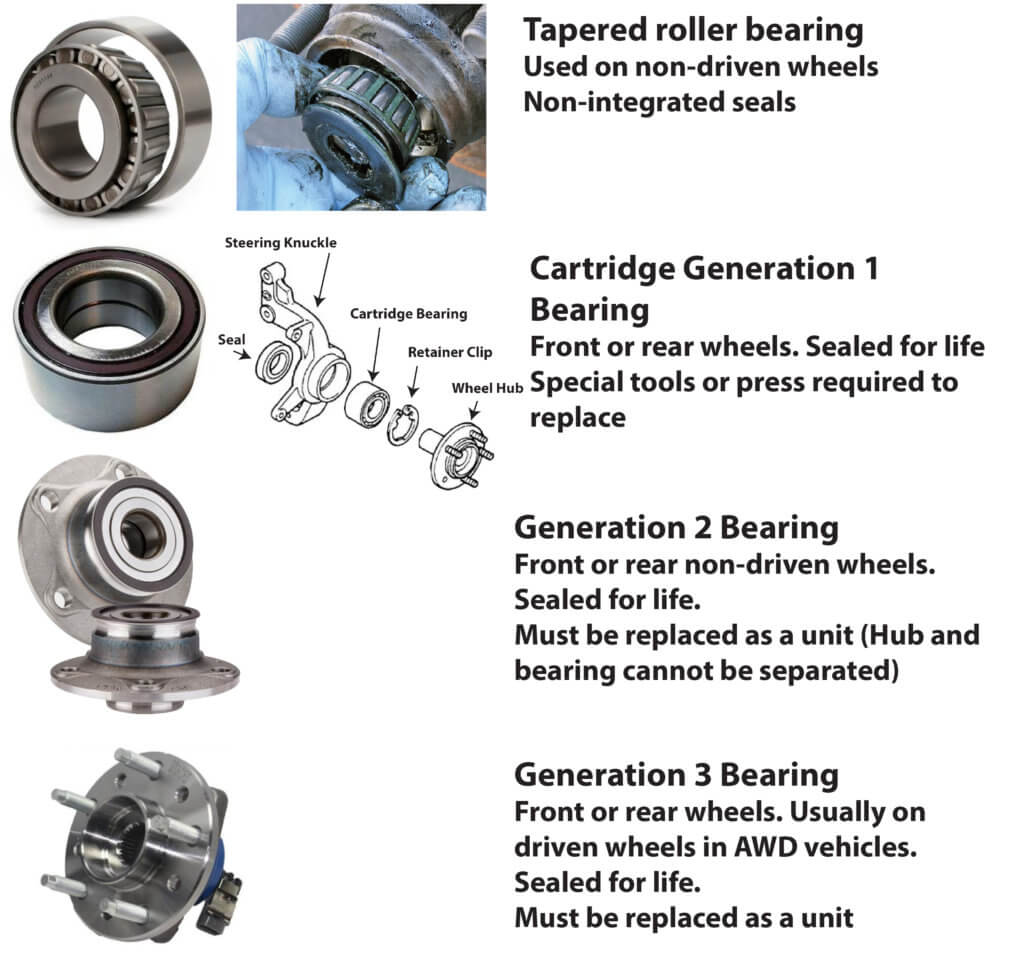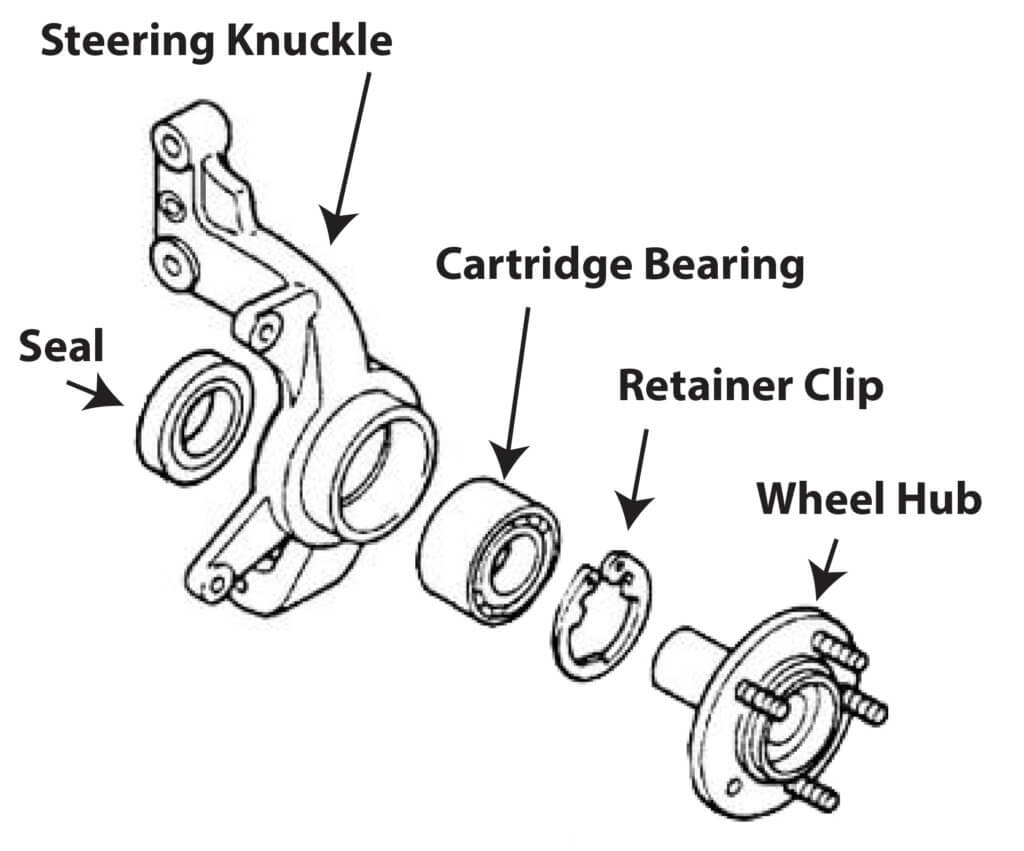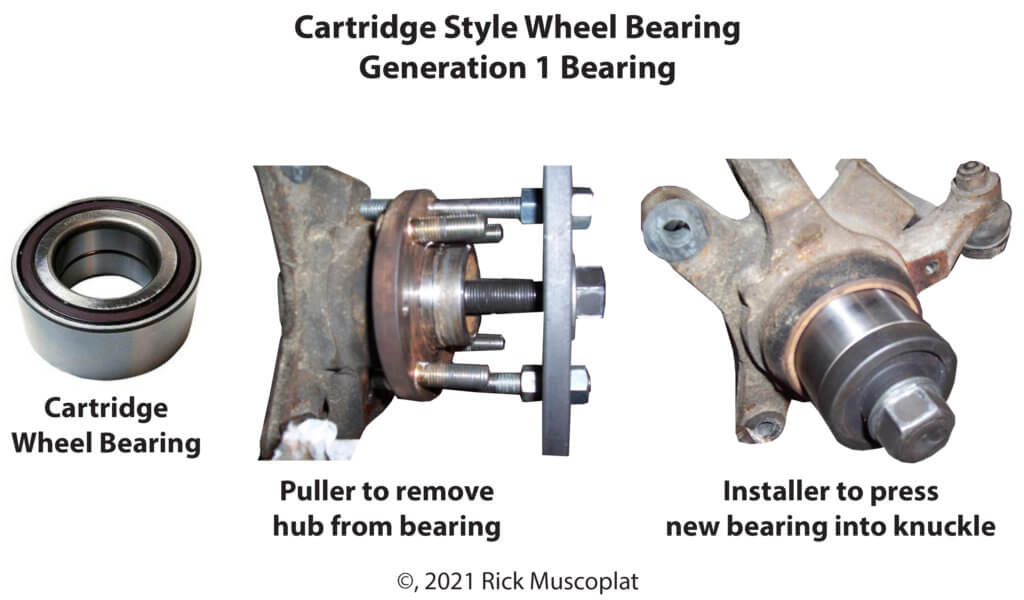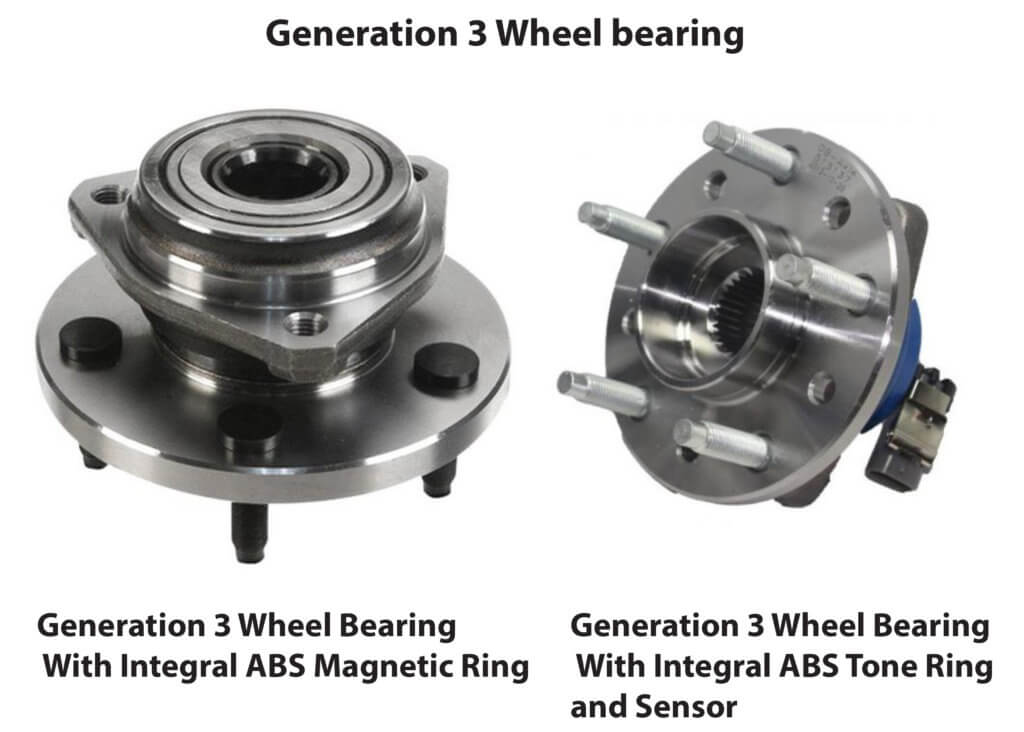Wheel Bearing Replacement Cost based on type
Wheel bearing replacement cost by type of bearing
There are four types of wheel bearings. tapered, cartridge, hub bearing (Generation 1) and a newer Generation 2 hub bearing. Wheel bearing replacement cost varies based on the type and the cost of the parts. Learn more about the different types and which ones are the most expensive to replace and why.

Wheel bearing replacement cost for tapered wheel bearings
Tapered wheel bearings are the least expensive of the four types, costing as little as $25 each. Repacking two wheel bearings generally costs about $125 at shops. Replacing two sets of bearings generally runs about $250.
Cartridge wheel bearing replacement cost
Removing and replacing a cartridge bearing is far more complicated than any of the other three styles.
The bearing itself is reasonably priced at around $75 each, and a wheel only requires one bearing. However, labor to replace a cartridge-style wheel bearing can run close to $250 to $300 per wheel.


Generation 2 & Generation 3 wheel bearing replacement cost
Gen 2 and 3 bearings are fairly easy to replace, taking as little as an hour each. However, the bearing cost is much higher. A generation 3 bearing for a 2018 Chevrolet Malibu costs about $250, which would bring the shop price to around $400-$500 per wheel.

Wheel bearings vary in quality
The quality of the replacement bearings can influence the cost. High-quality, Original Equipment Manufacturer (OEM) bearings are typically more expensive than aftermarket or generic alternatives. However, some trusted brands like Timken, National, NTN, SKF are almost as good as OE, but at a more affordable price.
Unfortunately, many auto parts stores sell cheap offshore bearings that are low quality. Those parts start making noise within a year and fail by the end of the second year. If you’re having a shop do the work, insist on a name-brand bearing or OE.
It’s important to note that neglecting wheel bearing replacement can lead to more severe and costly issues, such as damage to the brake components, suspension system, or even complete wheel separation, which can compromise your safety on the road. Regular maintenance and prompt replacement of worn wheel bearings can help prevent these potential problems and save you money in the long run.
Should you replace wheel bearings in pairs?
Some shops recommend replacing wheel bearings in pairs. The reasoning is the bearings have the same number of miles on each one. That makes some sense. However, bearings can be damaged or worn prematurely by repeatedly hitting potholes, curbs, or other obstructions. So a damaged wheel bearing on the right front passenger side can make noise or show slight movement, while the driver’s side bearing is perfectly fine. In that case, there’s no reason to replace a perfectly good bearing.
There are no big price savings to replacing bearings in pairs. It takes twice as long to replace two Gen 1, 2, or 3 bearings as it does to replace just one. However, if the shop is performing an alignment after the bearing replacement, then it might make sense to replace more than one bearing.
©, 2021 Rick Muscoplat
Posted on by Rick Muscoplat